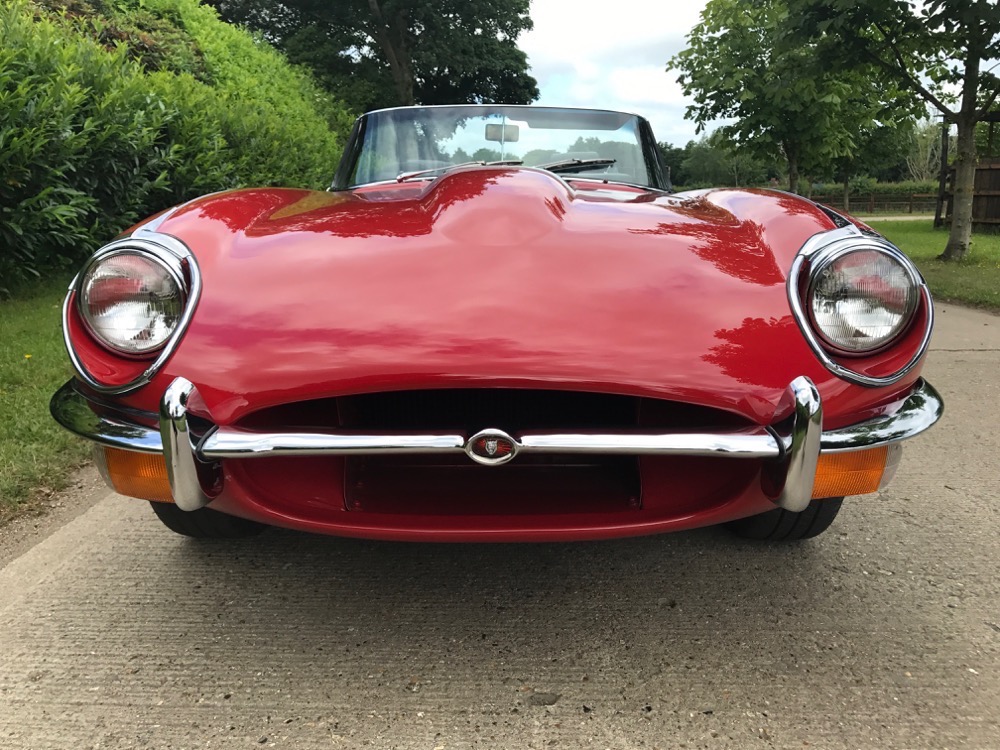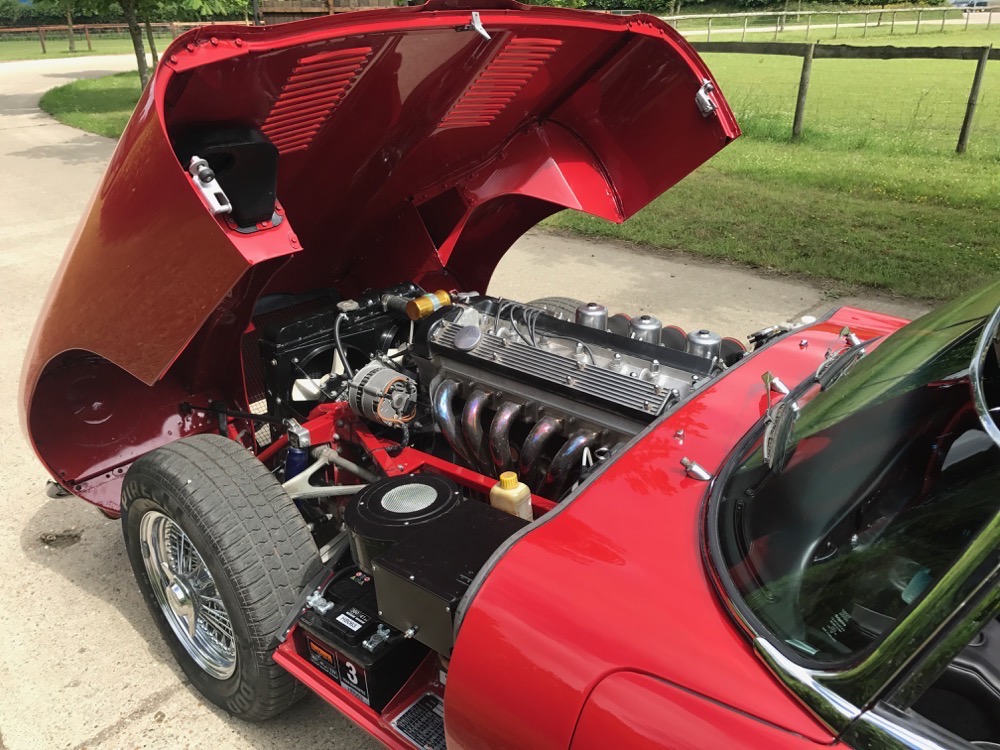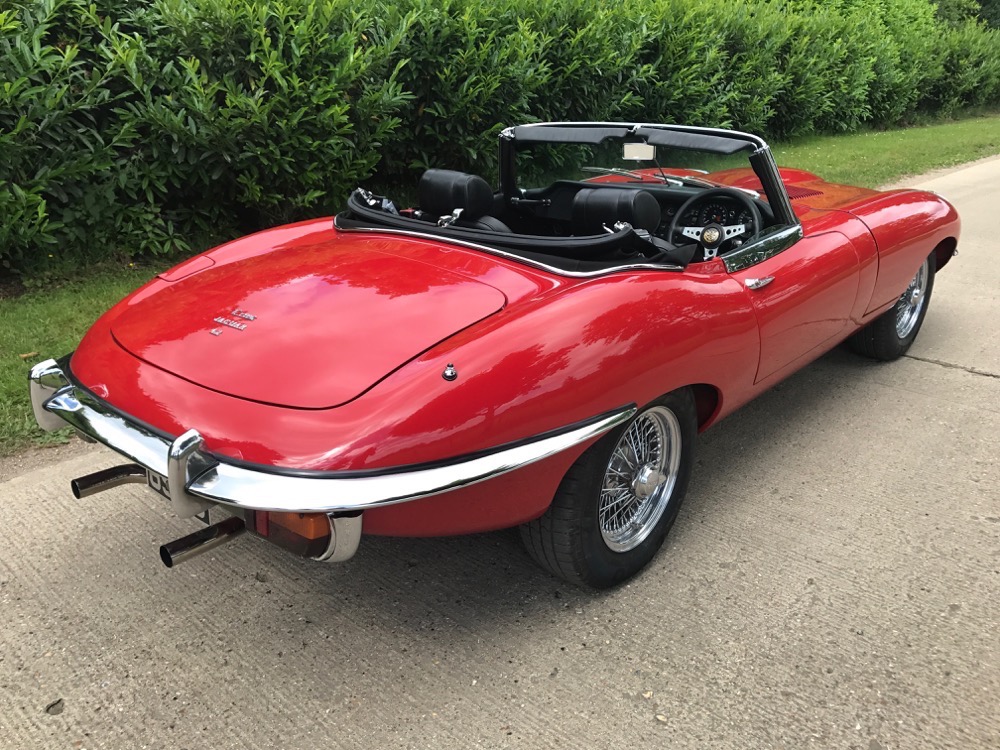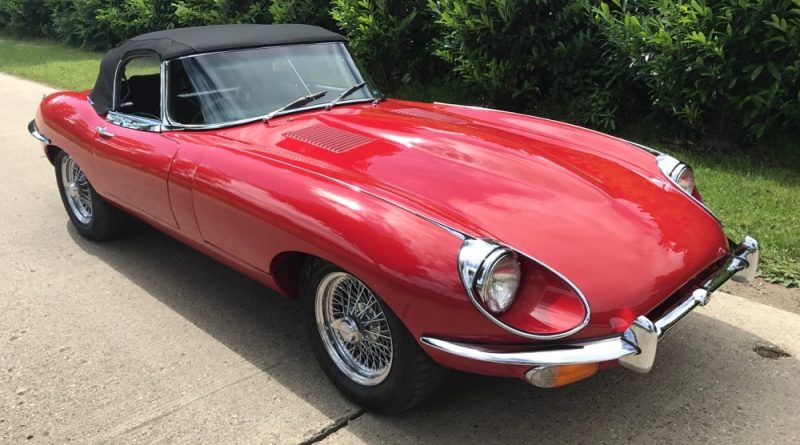1968 Jaguar E-Type 4.2 Series II OTS Roadster RHD
Jaguar launched the “Series II” E-Type in 1968 largely to satisfy U.S. design legislation. The most distinctive exterior feature was the absence of the glass headlight covers. In addition, a wrap around rear bumper with tail lights positioned below. The Series II had re-positioned front indicators, enlarged “mouth” to aid cooling and the installation of twin cooling fans. Other improvements included: Upgraded brakes and the addition of industrial ribbed rocker covers instead of the polished chrome covers of the “Series 1”. The interior dashboard was also re-designed to incorporate plastic rocker switches in place of the “Series 1” toggle switches.

Since leaving the production line in November 1964, believed to be the 28th right-hand drive 4.2-litre roadster to roll out from the iconic Coventry factory, the E-type was delivered to Henlys Limited, London. Evidence from its later restoration highlighted the car had been subject to some accidental exterior damage and presumably it was at this time the colour was changed from factory Opalescent Silver Grey to Red.

With its original factory interior including its original carpet set, its original factory vinyl soft top, hardtop, & many original component parts, including its factory tool roll kit & jack from new, makes this particular E-Type ideal for a discerning collector to add to their collection of classic Jaguars for its outstanding originality.


As US regulations got stricter, Jag realised they couldn’t just keep up with facelifts alone so were pushed to release a re-design. The series 2 had a bigger front air intake for improved cooling, larger side indicators, and enlarged rear lights which were repositioned under the rear bumper, spoiling the look for some (including me). These improvements made the S2 a more usable alternative to the S1 but without losing driving feel. Add in their more often than not lower price tag, and the S2 hits the sweet spot where originality meets usability.

Today the E-type is presented in great running and visual condition, ready for its next owner to take possession of a classic automotive treasure. The aesthetics of the car could be described as a ‘classic’ combination finish, with all-around great panel gaps and an eye-catching shine from the paintwork and brightwork. The interior continues to please as you sit comfortably in the retrimmed 4.2 seats behind a period correct 16” three-spoke steering wheel, surrounded by a well-maintained black interior, door cards and carpets. The engine and all the mechanicals have been properly and consistently maintained, boasting a period correct setup and yet still offering a highly drivable classic.




